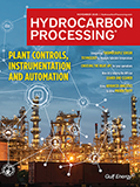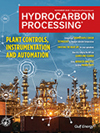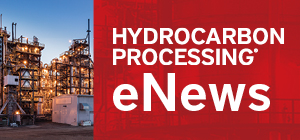Digital Exclusive: A unified approach to methane emissions reporting (3)
A. Lo Nigro, North America Energy Vice President, RINA, Chicago, Illinois
Methane is a potent greenhouse gas (GHG), with a warming potential 25 to 80 times greater than carbon dioxide (CO2) over different time horizons. Although it represents only 10% of global GHG emissions, its significant short-term climate impact makes its reduction a critical component of global climate strategies. Addressing methane emissions has become a global priority, driven by international agreements such as the Global Methane Pledge, which commits over 150 nations to reducing methane emissions by 30% from 2020 levels by 2030. Achieving this ambitious goal requires a comprehensive approach involving advanced monitoring, robust regulatory frameworks and effective mitigation strategies.
Methane emissions arise from several key sources: Fugitive leaks during fossil fuel production, processing and transportation account for a significant share. Additionally, venting and flaring during industrial operations release substantial methane volumes, while biogenic emissions from agriculture and waste management contribute to global totals. Each of these sources demands tailored solutions supported by accurate monitoring and innovative reduction technologies.
Accurate monitoring is crucial to effective methane management. Over the past decade, the development of advanced technologies has enhanced the ability to measure emissions with precision. Satellite-based platforms like GHGSat and MethaneSAT provide large-scale data on emissions hotspots, while drone-mounted sensors equipped with optical gas imaging and laser technology enable detailed leak detection. Ground-level innovations, such as vehicle-mounted detection units, offer rapid screening capabilities in urban and industrial environments.
Integrating these tools with artificial (AI)-driven analytics improves detection efficiency and precision. These systems process vast datasets to identify emissions patterns, allowing for targeted interventions. Blockchain technology is also emerging as a tool for enhancing the transparency and reliability of emissions data, enabling accurate reporting across industries. Frameworks such as the United Nations Environment Program’s OGMP 2.0 provide international guidance, advocating for direct measurement methods over estimation models, further strengthening monitoring and reporting practices.
Innovations and collaborative strategies for reduction. While monitoring provides the foundation, strategies to reduce methane emissions are essential. Approaches include improving leak detection and repair (LDAR) protocols, which use advanced tools to inspect and maintain infrastructure, reducing fugitive leaks. Vapor recovery units (VRUs) capture methane from industrial operations, transforming waste into usable energy. Additionally, optimizing industrial processes, such as improving pipeline integrity and enhancing compressor seals, offers a way to further reduce emissions.
Technological advancements have also improved flaring efficiency, a critical area for methane reduction. Traditional flaring methods can leave significant volumes of non-combusted methane. In contrast, advanced enclosed flaring systems achieve higher destruction rates, minimizing environmental impact. Research by the International Energy Agency (IEA) suggests that over 40% of methane emissions could be mitigated at no net cost, as the value of captured gas offsets implementation expenses.
Regulatory frameworks play a vital role in scaling these efforts. The European Union’s (EU's) methane regulation, part of the Fit for 55 initiative, mandates stringent monitoring and prohibits routine venting and flaring. Similarly, the Methane Emissions Reduction Action Plan in the U.S. (Note: this rule is likely to be scrapped under the new Donald Trump administration) combines mandates with incentives to drive technology adoption.
AssoRisorse’s Methane Emissions Working Group brings together Italian industry stakeholders to tackle the critical challenge of reducing methane emissions. As a key participant, the author's company provides technical expertise, drawing on its engineering and certification capabilities to support the implementation of innovative strategies for emissions monitoring and mitigation. The group unites key industry players—including operators, upstream and midstream companies, distributors, and engineering firms—to drive the development of a comprehensive global measurement, monitoring, reporting and verification (MMRV) framework.
Supported by the U.S. Department of Energy, the European Commission (EC) and 19 countries, this framework aims to enhance emissions tracking throughout the LNG supply chain, from extraction to processing to transport and storage, enabling global trade to benefit from a single, commonly recognized standard (Note: again, this initiative may be scrapped under the new Donald Trump administration, as his incoming administration plans to relax emissions regulations for industrial sectors).
The framework developed outlines best practices and cutting-edge technologies for reducing, monitoring and reporting methane emissions. It includes the validation and integration of advanced detection systems, including the alignment of field-level bottom-up measurements with top-down regional assessments. Such contributions are essential to achieving the transparency and accuracy required under frameworks like OGMP 2.0. This aligns with the broader objectives of the Global Methane Pledge and EU methane regulations, emphasizing a unified approach to emissions management and reporting.
Collaborative efforts are essential to address methane emissions globally. Partnerships like the Climate and Clean Air Coalition and initiatives such as the Aiming for Zero Methane Emissions Initiative foster knowledge sharing and innovation among stakeholders. Support for capacity building in developing nations, provided by organizations like UNEP and the World Bank, helps bridge gaps in technology and funding, enabling equitable implementation of methane reduction strategies.
The author's organization contributes to these efforts by providing technical expertise in emissions monitoring and mitigation. By validating advanced detection technologies and supporting compliance with global frameworks, it helps operators implement effective solutions. For example, the author's company played a role in integrating mobile and stationary monitoring systems, improving real-time detection and response capabilities in complex environments. These contributions exemplify how technical expertise can bridge the gap between regulatory requirements and practical implementation.
Broader implications and future directions. The benefits of methane reduction extend beyond climate mitigation. Capturing methane emissions enhances resource efficiency, turning waste into usable energy. This not only reduces operational costs but also opens economic opportunities, particularly in industries like LNG. Compliance with stringent emissions standards positions companies as leaders in sustainability, improving access to key markets and driving innovation across the supply chain.
The transition to renewable gases, such as biomethane and hydrogen, further highlights the potential of methane reduction efforts. Biomethane, derived from organic waste, offers a low-carbon alternative that can integrate into existing gas networks. In rural areas, its production supports local economies while contributing to global decarbonization goals. Hydrogen, produced through renewable-powered electrolysis, provides another path to reducing the carbon intensity of energy systems, with applications in transportation, industry and power generation. Both biomethane and hydrogen align with the EU’s Fit for 55 objectives and support broader efforts to achieve net-zero emissions by 2050.
However, challenges remain. Inconsistent measurement methodologies, limited access to advanced technologies and high implementation costs hinder progress in some regions. Addressing these issues requires sustained investment in research and development, the harmonization of international standards and financial mechanisms to support equitable adoption. Emerging digital solutions, such as IoT-enabled sensors and blockchain systems, offer promising pathways to improve data accuracy, accountability and operational efficiency. Facilitated by these technological tools and engineering expertise, operators can retrofit existing LNG facilities to accommodate alternative fuels like hydrogen and ammonia. These efforts ensure that critical infrastructure remains relevant as energy markets evolve, enabling a smoother transition to low-carbon systems.
Methane reduction is a global effort. As industries and governments work together to align policies, technologies and practices, the reduction of methane emissions offers an opportunity to achieve immediate climate benefits while building a resilient, equitable energy future. The success of these initiatives will depend on continued innovation, robust regulatory alignment and international cooperation.






Comments